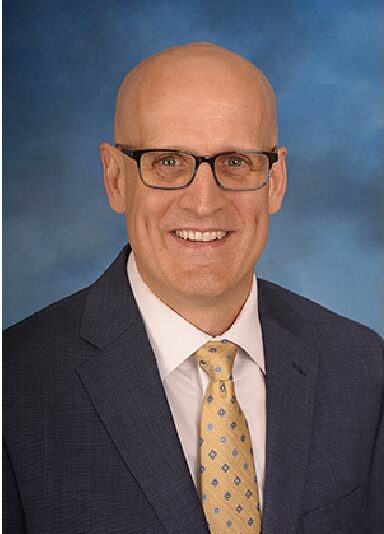The emerging technologies of unmanned aerial vehicles (UAV), also known as drones, is presenting new liability risks and evolving insurance coverage for both the drones and any associated liabilities, attendees at last month’s Casualty Actuarial Society’s (CAS) Annual Meeting were told. The actuaries heard panelists discuss the UAV issues during a CAS concurrent session entitled “Attack of the Drones.”
“There have been a lot of changes, or different regulations, on drones for commercial and private uses,” said Carl X. Ashenbrenner, FCAS, principal consulting actuary at Milliman and panel moderator. The Federal Aviation Administration (FAA) just recently put out its regulations on drones, effectively splitting the market into “flying for fun” and “flying for work,” Ashenbrenner explained. Flying-for-fun drones have to be registered if they are over 0.55 pounds, must stay at least five miles away from airports and operators have to maintain a visual line-of-sight, Ashenbrenner said, pointing out that the operator is required to register but does not need to have a pilot’s license. If used for work, a drone operator must also register and obtain a pilot airman’s certificate that requires passing an exam, he stated.
“Drones have a lot of different usages, including agricultural, inspections, architecture, construction, but since there is a visual-line-of-sight limitation, they can’t be used for deliveries yet,” Ashenbrenner said. The FAA had 300,000 drone registrations during the first 30 days after its regulations were put into place, with commercial sales of the UAVs predicted to grow from 600,000 to 2.7 million, depending on the cost of the drone and accessories. And if a drone crashes, or is involved in an accident, the operator is required to file a report with the FAA.
The FAA just recently put out its regulations on drones, effectively splitting the market into “flying for fun” and “flying for work,” Ashenbrenner explained.
Igor Pogrebinsky, FCAS, principal-commercial casualty at ISO, outlined potential drone exposures, associated coverage implications, rating and underwriting considerations, as well as some of the coverage options developed by ISO.
He said that in addition to the FAA regulations, more than 30 states have passed drone related legislation, mostly around safety and privacy issues.
“Drone exposures can be generally grouped into three categories: those related to the drones themselves, those related to drone operators and those related to the drone flying environment,” Pogrebinsky said. But since drones are still such a new technology, not all potential exposures have yet been identified, he cautioned.
In the liability area, property damage or bodily injury from a drone crash, as well as defects in drone design and manufacturing, could potentially result in lawsuits, Pogrebinsky pointed out.
Limited data is also a key issue that impacts the pricing of different insurance considerations surrounding the use of drones. “Historical crash information is very limited,” Pogrebinsky said. And he warned that drone crashes are likely to become more prevalent as they are more widely used. Drone operator experience and training will likely have a significant impact on the potential for loss, he said.
Among the underwriting considerations, potential issues related to ownership might be an important consideration. Are the drones owned and operated by the insured, or are the drones and operators hired? “For example, if the insured is operating a non-owned drone, what liability, if any, did he assume contractually if the drone malfunctions and crashes?” he asked.
Drone coverage is available in the aviation insurance market and in the standard lines of insurance. “At ISO we developed several coverage options for drones, with some already released and plans for others also in the works,” he said. Coverage forms and endorsements that would allow insurers the flexibility to tailor the level of coverage to their risk appetite for drones have been released for ISO’s general liability, commercial umbrella and excess, commercial inland marine, commercial property and business owners programs, he said.
Speaking on “Drone Insurance — The Aviation Market Perspective,” Michael Falcone, FCAS, executive vice president for reinsurance, actuarial and compliance at Global Aerospace, Inc., said that while the aviation insurance market represents only one-third of one percent of the worldwide property and casualty insurance market, it has taken the lead in writing drone coverage.
Falcone noted that the biggest exposure for the aviation market is with the vehicles themselves and the potential liability that they can create. The general aviation underwriting skill set translates very well onto the drone side. He also noted that aviation insurers will put up sizeable limits that show their commitment to the drone business.
Falcone also noted that “Drone manufacturers are beginning to seek insurance coverage, because there is a general expectation that there is going to be a lot of litigation in this area as events occur,” with manufacturers, in some measure, getting roped in.
The main challenges to the aviation market moving into the drone market, Falcone explained, include handling the volumes while trying to learn how to rate these policies in a more streamlined manner, building the rating models, particularly to cover the many different types of hull vehicles, and exploring distribution channels as much of this business will not be coming in through the specialist aviation brokers.
Falcone concluded that while drone regulations are still evolving and the future of drones is still not completely seen, when drones start operating properly and autonomously in the airspace, the insurance market will continue to evolve and provide new challenges and opportunities for insurers.
William J. “Bill” Davis is a regional representative for the Insurance Information Institute, responsible for III activities in a number of southeastern and south central states. Prior to joining the Institute in 1982, he served as a regional manager of corporate communications for United Airlines, as a city government public information officer and as a radio and TV news reporter and anchor.











